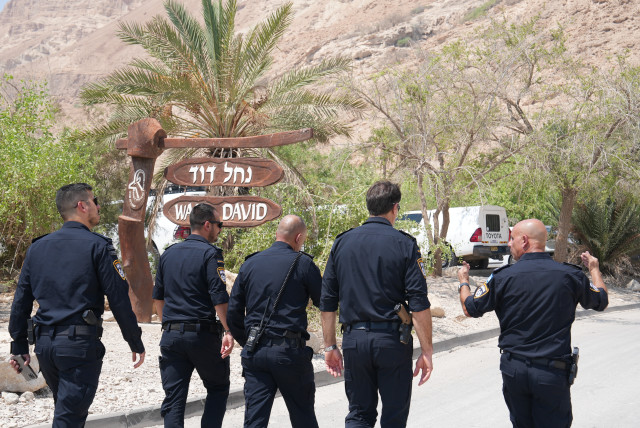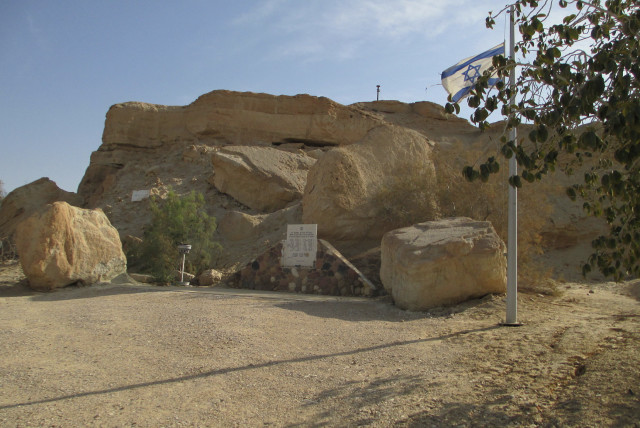Will the shrinking Dead Sea lead to more dangerous landslides? - analysis

Eight-year-old Yehuda Levi was killed when boulders fell on him during a Thursday morning hike.
Experts are warning that could see an increased frequency of landslides akin to the one that struck Nahal David on Thursday, killing an eight-year-old boy as he hiked with his family.
The growing danger comes from the interplay of natural and human-induced global warming which is accelerating the retreat of the Dead Sea.
"The whole area is very fragile," said Noam Bedein, founder and director of the Dead Sea Revival Project. "You do not have good infrastructure, and anything could erupt anytime."
Landslides occur when the inherent equilibrium of a slope is disrupted, often triggered by factors such as intense rainfall, periods of drought, seismic activities like earthquakes, or even volcanic eruptions, explained Prof. Shmuel Marco of the Department of Geophysical, Atmospheric and Planetary Science at Tel Aviv University.
In the Dead Sea region context, instability arises from a multifaceted interplay of factors. On the one hand, tectonic forces play a pivotal role due to the geographical positioning of the area. Positioned at the juncture of two tectonic plates, with Israel and Sinai on one side and the Arabian region encompassing Jordan and Syria on the other, these plates are sliding past each other. The eastern side gradually shifts northward while the western side moves southward, potentially leading to regional uplift.
On the other hand, explained Dr. Ariel Heimann, a senior researcher at the INSS, the Dead Sea is rapidly receding at a rate of as much as a meter a year. As the sea recedes, the water flowing from the rivers to the sea speeds up. Fast water erodes more material than slow water.
The mountains of Jordan and Judea are hundreds of meters high. When their foundations erode, these high cliffs become unstable.
What causes a landslide?
Anything can kick off a landslide, Marco said. It can be something as trivial as an animal passing through the slope and disturbing the wrong stone. A landslide can start very small and ultimately cause a cascade.
"We don't know yet what happened in this particular case," Marco said. "It may have even started from a tiny earthquake so small that we did not even feel it, but it set off a landslide."
Environmental Protection Minister Idit Silman said that a special committee would be formed to investigate the cause of Thursday's event.
Marco stressed that landslides are "impossible to predict" and that the best one can do is map vulnerable slopes. But even then, in the case of the Judean Desert, "the whole desert is vulnerable. So you have to put things in perspective."
Until now, the likelihood of a dangerous landslide coinciding with human presence was exceedingly low. The most recent instance of such an occurrence took place on December 30, 1970, triggered by intense rainfall. During this event, a segment of a 12-meter-high cliff in the Neot HaKikar moshav abruptly collapsed and catastrophically struck the dining facility of an Israel Defense Force base. This incident claimed the lives of nineteen soldiers and one civilian while also leaving 10 soldiers wounded, with several sustaining severe injuries.
Marco said that he does not believe that people will have to stop traveling in the region. However, there is concern that these events could become more frequent.
The Dead Sea has become increasingly vulnerable, explained Bedein. He told The Jerusalem Post that there are 7,000 sinkholes on the Dead Sea shoreline, and around 700 new sinkholes appear every year, rendering 98% of the coastline inaccessible and dangerous to humans.
In 2018, an unfortunate incident unfolded as 10 teenagers lost their lives due to a sudden flash flood during a hike in the Judean Desert, brought on by unexpected and untimely rainfall in the region.
As the water subsides and sinkholes multiply, the water's force gains momentum and intensity on the terrain.
Bedein pointed out that addressing this issue in Israel would require substantial time and resources, with a minimum of a decade and billions of dollars necessary to implement any practical solution to curb the Dead Sea's receding. Instead, he emphasized embracing innovative and imaginative approaches to coexist harmoniously with these natural transformations.
In the last 20,00 years, the world is coming out of an ice age and into an interglacial period, Marco added - a warmer period with more rain in the rainy part of the world and less in the desert. Human activity only enhances the process.
"I think we will see more and more acute events," Marco concluded. "The cliffs will become steeper, and I don't know if there is anything we can do about it at this stage."
The Environment and Climate Change portal is produced in cooperation with the Goldman Sonnenfeldt School of Sustainability and Climate Change at Ben-Gurion University of the Negev. The Jerusalem Post maintains all editorial decisions related to the content.
Jerusalem Post Store
`; document.getElementById("linkPremium").innerHTML = cont; var divWithLink = document.getElementById("premium-link"); if (divWithLink !== null && divWithLink !== 'undefined') { divWithLink.style.border = "solid 1px #cb0f3e"; divWithLink.style.textAlign = "center"; divWithLink.style.marginBottom = "15px"; divWithLink.style.marginTop = "15px"; divWithLink.style.width = "100%"; divWithLink.style.backgroundColor = "#122952"; divWithLink.style.color = "#ffffff"; divWithLink.style.lineHeight = "1.5"; } } (function (v, i) { });


